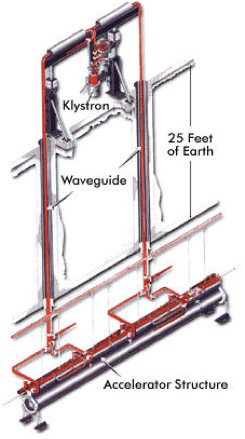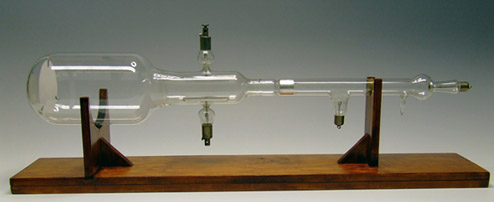As tubes are slowly replaced from many of their traditional roles, they continue to be utilized in an important and often overlooked field: academic research. This section looks at how tubes have helped further our understanding of the physical world as well as what roles we can expect them to play in coming years.
Particle Accelerators:
Linear accelerators utilize klystrons to produce microwave radiation that energize particle beams.
Accelerators have played and continue to play a vital role in answering some of the most significant questions of physics, because high-speed collisions result in particles breaking down into their fundamental components. Consequently klystrons still have
an important application as high-energy RF sources as a result (figure 1). This is clearly illustrated by the active development of klystrons by Stanford Linear Accelerator Laboratories in America, who are planning to employ as many as 4000 in their latest
accelerator. What is also worth nothing is that there are plans to continue production into the future.
Tubes are clearly still making contributions towards academic research. They have quietly played a significant role in improving our understanding of particle physics, without receiving the credit they deserve. This is exemplified by J.J. Thompson’s monumental discovery of the electron, using tubes he constructed (bottom picture). Recently, researchers have also constructed specially built vacuum tubes that would allow us to better understand the property of electron spin and its interaction with semiconductors. Taking this into consideration, it is therefore remarkable, that over a century later that custom made tubes are again being used to further our understanding of electrons! To find out more about these tubes, click the link below to proceed to the next page.
References/ Further Reading:
1. http://www-group.slac.stanford.edu/kly/default.htm
2. http://nobelprize.org/educational_games/physics/transistor/history/

